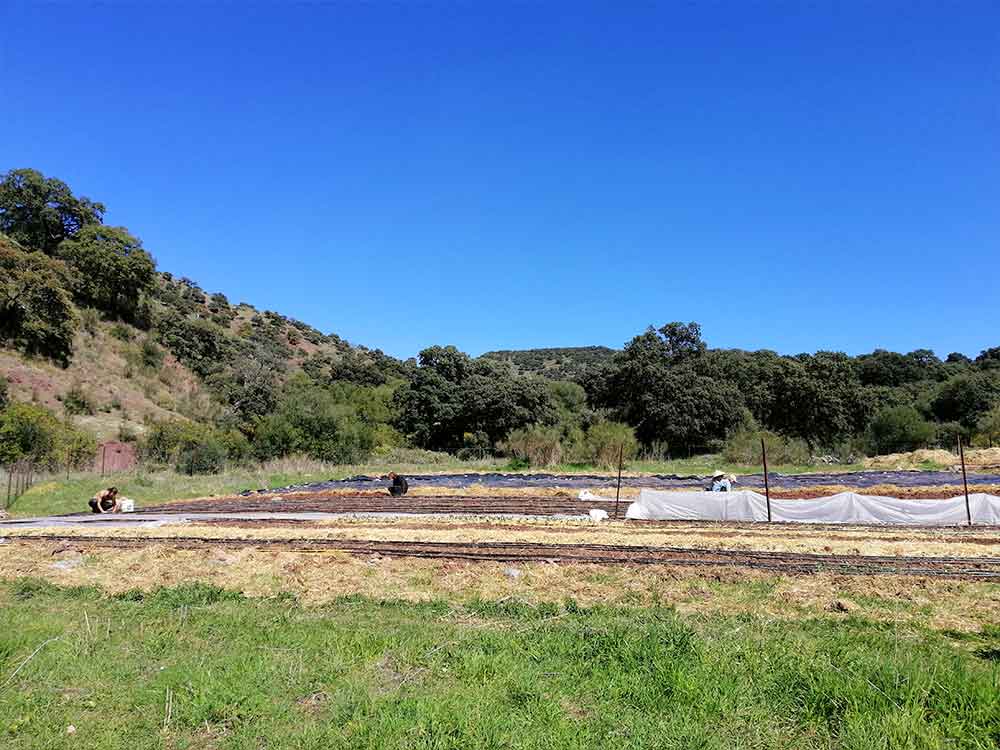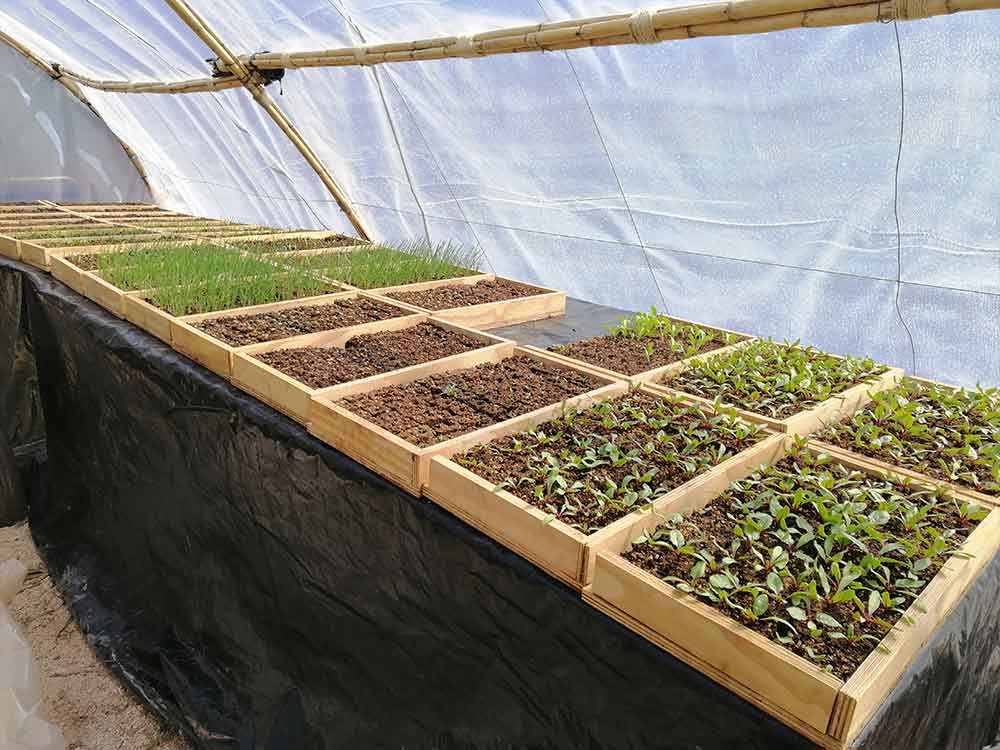A NEW GARDEN FOR A NEW YEAR

“We might say that the earth has the spirit of growth; that its flesh is the soil”, Leonardo da Vinci
Climate disruption is the most pressing issue of our time, and current food systems account for roughly one half of all man-made greenhouse gas emissions. Here, at La Donaira we are interested in solutions that promote the principles of agroecology, food sovereignty and the localisation of food production as alternatives to global Agribusiness with its overexploitation of natural resources, people and communities.
Our food choices are important and from that premise Andrew is spearheading a production garden in La Donaira that will provide enough fresh vegetables to the restaurant kitchen and to feed the volunteers on a yearly basis while at the same time removing carbon dioxide from the atmosphere, increase the depth and fertility of top soil, purify water and provide wildlife habitat.
Setting up a successful productive garden has many ins and outs but for those of you who are interested here are some pointers to guide you in the right direction. The first step is undoubtedly to develop a water management system. In our climate, rainfall has been unpredictable and it seems this year it will be insufficient. We have a network of wells around the property that provide us with enough water for our crops. The maintenance and agricultural team have played a huge role in the set up of our garden and installed a gravity fed drip irrigation system. Drip irrigation uses water a lot more efficiently since it travels slowly and directly to the targeted plants´ root zone.
Secondly, it is imperative to find the right site to grow your crops. For optimum growing potential finding a site with the best climatic conditions is necessary. Our site is south facing, which maximises the hours of sunlight, warms up quicker during the day and also in the season.
Thirdly, start your seeds inside. The maintenance team built a greenhouse made from cane that was sourced locally and reinforced with tree trunks. It serves as a plant nursery, protects the seedlings from pests, and extends our growing season. Andrew is using soil blocking, a technique in which seeds are germinated in blocks of soil (peat moss, compost, perlite, blood meal) created by a press. The advantages are that it eliminates the need for plastic growing pots, the seedlings develop a stronger root system and experience less transplant shock. If your space is minimal you could build a cold frame instead. Lastly, plan your crops, establish a growing calendar and get ready to get your hands dirty.
To get a better picture of the La Donaira garden here is some information you might find useful. The layout comprises 30 permanent beds that are 30 meters in length by 75 cm in width. The beds are designed to provide the most space and labour efficient layout and the most beneficial growing environment for the plants. The fact that they are permanent allows for optimal building and maintaining of soil structure. On the edges and in the middle of the beds we are building Natural Windbreaks (trees, shrubs, herbs and aromatics) to increase biodiversity and encourage insectivorous birds and insects to reduce the number of insect pests in the garden. We also want to attract different pollinating insects to help us in the garden and to provide them with food in return for their invaluable services.
Our beds were covered with a black tarp for more than a month. The tarp created warm and moist conditions in which weed seeds germinated but the young weeds were killed by the absence of light. It also kept the soil covered and protected the soil biology which is the engine of our garden.
At the beginning of March we rolled the tarp on the first 6 beds, raked 2 cm to make a fine tilth, added some high grade compost and started seeding into the beds. We expect our first harvest (radishes, turnips, salad mix, beets, kohlrabi, and more) at the end of April, and we will continue harvesting until the end of the year.
Our goal is to create a no dig garden in order to build soil and regenerate the carbon cycle. In a follow up article we will showcase information regarding the soil food web and the importance of no till agriculture as a mitigation strategy to climate change.








